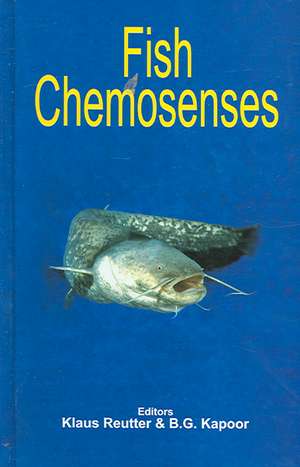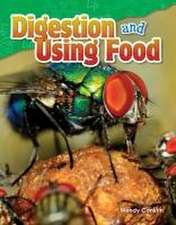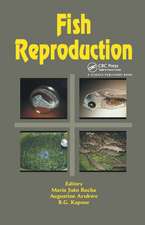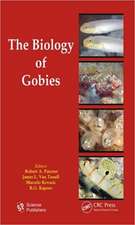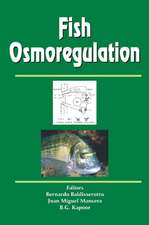Fish Chemosenses
Editat de Klaus Reutter, B. G. Kapooren Limba Engleză Hardback – 8 ian 2005
Preț: 1012.89 lei
Preț vechi: 1235.24 lei
-18% Nou
Puncte Express: 1519
Preț estimativ în valută:
193.84€ • 201.63$ • 160.03£
193.84€ • 201.63$ • 160.03£
Carte tipărită la comandă
Livrare economică 14-28 aprilie
Preluare comenzi: 021 569.72.76
Specificații
ISBN-13: 9781578083190
ISBN-10: 1578083192
Pagini: 358
Ilustrații: Illustrations (some col.)
Dimensiuni: 152 x 229 mm
Greutate: 0.82 kg
Ediția:New.
Editura: CRC Press
Colecția CRC Press
ISBN-10: 1578083192
Pagini: 358
Ilustrații: Illustrations (some col.)
Dimensiuni: 152 x 229 mm
Greutate: 0.82 kg
Ediția:New.
Editura: CRC Press
Colecția CRC Press
Cuprins
Development and Evolution of the Olfactory Organ in Gnathostome Fish; Olfactory Responses to Amino Acids in Rainbow Trout: Revisited; Olfactory Discrimination in Fishes; In-vivo Recordings from Single Olfactory Sensory Neurons in Goldfish (Carassius auratus) during Application of Olfactory Stimuli; Olfactory Cross-adaptation: Not a Peripheral but a General Phenomenon; Review of the Chemical and Physiological Basis of Alarm Reactions in Cyprinids; The System of Solitary Chemosensory Cells; Barbel Taste System in Catfish and Goatfish; Subtypes of Light and Dark Elongated Taste Bud Cells in Fish; Efferent Synapses in Fish Taste Buds; Comparison of Taste Bud Types and Their Distribution on the Lips and Oropharyngeal Cavity, as well as Dentition in Cichild Fish (Cichlidae, Teleostei); Role of Gustation in Two Populations of Deep-sea Fish: Comparison of Mesopelagic and Demersal Species Based on Volumetric Brain Data; Comparison of Taste Preferences and Behavioral Taste Response in the Nine-spined Stickleback Pungitius pungitius from the Moscow River and White Sea Basins;
Descriere
This book deals with chemosensory systems of fishes and covers the well known olfactory and the gustatory senses as well as the less popular solitary chemosensory cells. Chemosenses play an essential role in the life of a fish. They help fish in their search for food, to consume it and digest it. They also help fish to find their conspecifics and to avoid enemies or predators. Fish live in varied and often extreme ecological conditions frequently inhabiting niches such as caves or at great depths in the oceans. The chemosensory organs of such well adapted fish are highly specialized and evolved in contrast to the chemosenses of sight-hunting fish. Fishes have developed diverse strategies to survive within the widely varying water bodies, owing, at least in part, to the highly evolved chemosensory systems. A group of internationally reputed specialists have contributed to this book. It contains six chapters devoted to fish olfaction, one chapter to solitary chemosensory cells and six chapters to the fish taste
